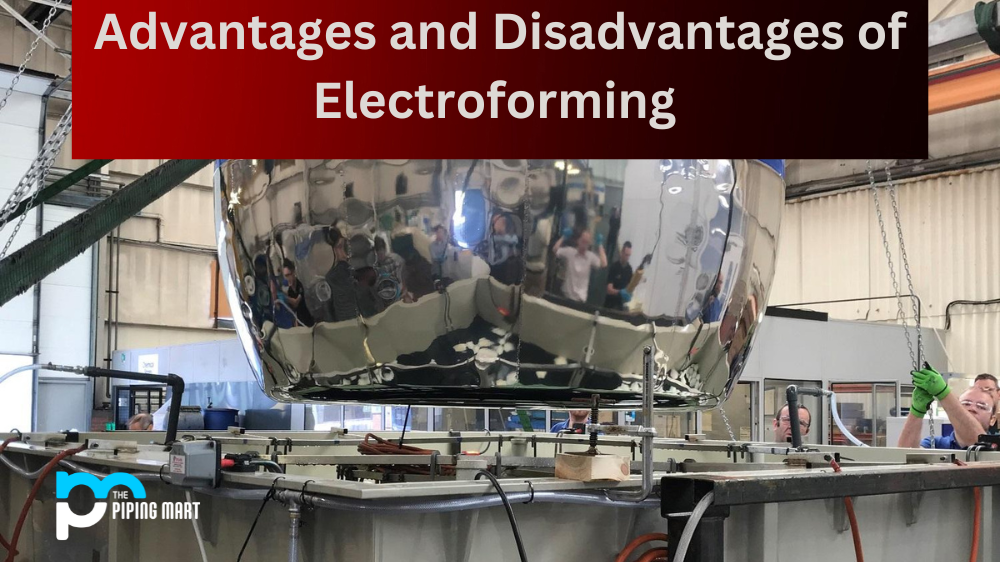Electroforming is a metal forming process used to produce precision parts with complex shapes. It involves the formation of a thin layer of metal onto an object, often called a mandrel, creating an exact copy of its shape and details. This process has been used for many years in various industries, and while it has numerous advantages, it also has several disadvantages. Let’s take a closer look at electroforming – the good and the bad.
Advantages of Electroforming
The primary advantage of electroforming is that it produces highly detailed parts with intricate shapes and extremely fine detail. The process allows for precise replication or duplication of parts without having to build expensive production moulds or tools. In addition, since no tooling is needed, there are no tooling costs associated with the process and production times can be significantly reduced. Furthermore, electroforming eliminates undercut areas that cannot be produced by traditional casting processes and produces parts with superior dimensional accuracy compared to other methods. Finally, small-scale production runs can be economically feasible because the costs associated with electroforming are independent of part size or quantity.
- Electroforming is a process that can be used to create metal parts with very precise dimensions.
- Electroforming can be used to create parts with very thin walls and intricate shapes.
- The process of electroforming is very efficient and can be used to create large quantities of parts.
- Electroforming is a very versatile process and can be used to create parts from a variety of metals.
- The process of electroforming is environmentally friendly and does not produce hazardous waste products.
Disadvantages of Electroforming
While electroforming offers numerous advantages, as outlined above, there are also some drawbacks associated with this process. For example, electroformed parts have limited strength due to their thin walls; therefore, they are not suitable for applications requiring components that must withstand high loads or pressure. In addition, the surface finish obtained in this method may require additional post-processing, such as grinding or polishing, if a smooth finish is desired. Finally, materials such as steel cannot be electroformed due to their electrical conductivity; instead, non-conductive materials such as nickel must be used, which may limit design flexibility in certain applications.
Limited to conductive materials
One of the primary disadvantages of electroforming is that it is limited to conductive materials. This means that non-conductive materials, such as plastics or glass, cannot be electroformed.
Requires high initial investment
Another disadvantage of electroforming is that it requires a high initial investment. This is because electroforming equipment is expensive, and the process itself can be time-consuming.
It can be difficult to control
Another issue with electroforming is that it can be difficult to control. This is because the process relies on electrical currents, which can be tricky to control accurately. Additionally, if the current is too strong, it can damage the material being electroformed.
Not suitable for large-scale production
Due to the limitations of electroforming, it is not suitable for large-scale production. This means that it is not an ideal manufacturing method for companies that produce products in large quantities.
Can produce hazardous waste
Finally, another drawback of electroforming is that it can produce hazardous waste. This waste can come in the form of toxic chemicals or electrical waste.
Conclusion:
While there are some drawbacks associated with electroforming, such as limited strength and material selection limitations, overall, it is an effective way to produce precision components with complex shapes quickly and cost-effectively without needing expensive tooling or moulds. By understanding both the advantages and disadvantages of this process, you can make an informed decision about whether it is appropriate for your specific application needs.

Meet Bhavesh, a seasoned blogger with a wealth of knowledge and experience. From metal products manufacturing to retail, Bhavesh has a diverse background in various industries and is dedicated to sharing his insights and expertise with readers.




